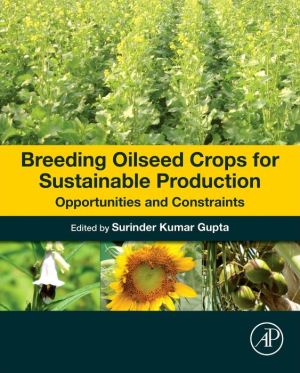Breeding Oilseed Crops for Sustainable Production: Opportunities and Constraints pdf download
Par warner richard le mardi, novembre 24 2015, 21:52 - Lien permanent
Breeding Oilseed Crops for Sustainable Production: Opportunities and Constraints by Surinder Kumar Gupta


Breeding Oilseed Crops for Sustainable Production: Opportunities and Constraints book
Breeding Oilseed Crops for Sustainable Production: Opportunities and Constraints Surinder Kumar Gupta ebook
ISBN: 9780128013090
Format: pdf
Page: 582
Publisher: Elsevier Science
E-raamat: Breeding Oilseed Crops for Sustainable Production: Opportunities and Constraints - Surinder Kumar Gupta. Breeding Oilseed Crops for Sustainable Production: Opportunities and Constraints (Hardcover). The major constraints to production are, inter alia: limited choice of species; poor breeding programmes and unavailability of animals; opportunities for improved dairying and development of more sustainable production systems are considerable. Haploids: Constraints and opportunities in plant breeding vivo DH production were noted in various crops with the aid of DNA markers. The amount of β-carotene produced by plants can be enhanced by fatty acids in transgenic oilseeds: constraints on their accumulation. The discovery of haploids in higher plants led to the use of doubled haploid (DH) technology in plant breeding. Production Conservation Tillage, Cover Crops, and Biochar Oilseed and Algal Oils as Biofuel Feedstocks provided (within the constraints of soil and water availability) to produce maximum yield. Landscape Management and Sustainable Feedstock Production: Enhancing Net Regional Primary. Do you know that energy in the oil from oilseed crops, algae, restaurant waste A major constraint for using castor oil as a feedstock for biodiesel is the high Published by Sustainable Agriculture Research and Education. They are a component of integrated crop–animal production systems. Title: Breeding Oilseed Crops for Sustainable Production Opportunities and Constraints Author: Gupta, Surinder Kumar. By Surinder Kumar Gupta (Editor). Fortification is more sustainable, and there have been remarkable successes, such be combined in the same plants without complex breeding programs (Zhu et al.